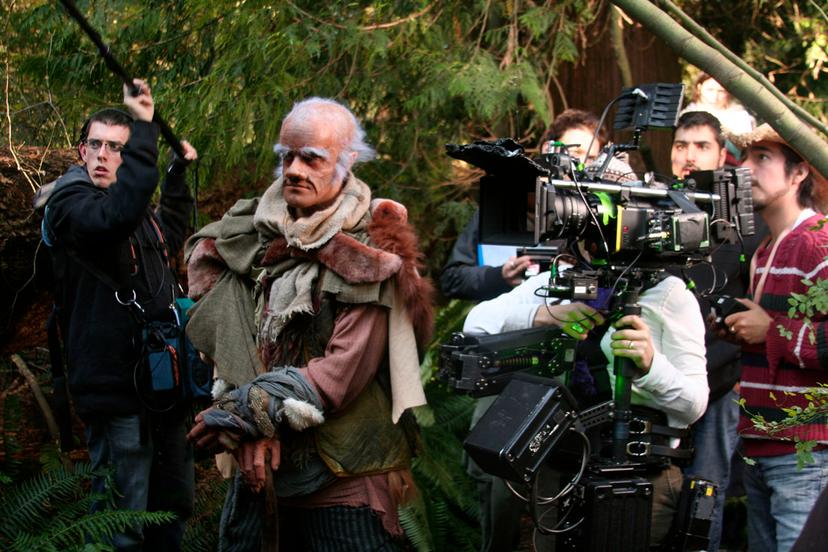Media and Entertainment

Structure
Radio and television broadcasters, film production companies, and publishing companies comprise the media and entertainment industry. The radio broadcasting sector consists of about 5,164 companies in the United States with combined revenue of more than $22 billion. These companies, such as Entercom Communications Corp., iHeartMedia (formerly Clear Channel Communications), Cumulus Media, and Sirius XM Radio, operate radio broadcast studios that transmit news and talk shows, music, and other entertainment. Sirius XM provides satellite as well as online radio services, including stations such as CNBC, BBC World Service, Bloomberg Radio, as well as regional news channels. Radio broadcast networks, syndicates, and stations transmit audio programming via FM and AM radio channels, as well as through digital, satellite, and Internet radio channels. There are commercial broadcasters that are funded by advertisers, and public radio stations, which are funded by public and private funds, subscriptions, and corporate underwriting and are usually run by universities and public groups for educational purposes. For instance, the New York City-based station WFUV is run by Fordham University. Key professions in radio broadcasting include administrative jobs such as general managers, vice presidents, office managers, and accountants; operations and programming directors; news directors, producers, reporters, announcers; board operators and engineers; sales, promotion, marketing, and research managers; as well as Web-related jobs for the radio station’s Web site, such as Web designers, webmasters, and community managers.
Television broadcasting includes network-owned stations and affiliated, independently owned stations. The networks are usually flagship stations in major media markets and the affiliated stations are contracted with networks to broadcast their programming. The major broadcast networks are ABC, CBS, NBC, and FOX. Television stations usually consist of the following departments: management, including a president, general manager, vice president, etc.; news department, including news directors, assignment editors, producers, reporters, anchors, and photographers; production, including directors and technical directors, audio operators, and camera operators; sales, which is responsible for selling commercial spots on programs; promotions, which creates and edits commercials promoting the station; and engineering, which manages all technical aspects of the programs and the station itself.
The film industry is organized into production and distribution companies, film exhibition companies, and post-production companies. There are major film studios such as 21st Century Fox, Paramount, Universal, Sony, and Warner Bros., as well as independent production companies like Lionsgate Films, Samuel Goldwyn Films, and Magnolia Pictures, among numerous others. Independent films are produced outside of major film production studios; they’re usually more artistic than studio pictures and have a compelling story to tell. Independent films also have smaller budgets because it’s up to the production teams to raise money to get the indies made. Post-production companies offer services such as editing, film-to-tape transfers, titling, closed captioning, computer-generated graphics, animation, special effects, and developing and processing motion picture film. Many of the top film production companies also own distribution and post-production companies. For example, Walt Disney Studios Motion Pictures (formerly Buena Visa Pictures Distribution) is a film distribution company owned by The Walt Disney Company. Whether a major or independent film production studio, the key jobs are writers, editors, producers, directors, camera operators, audio technicians, electricians and lighting specialists, casting agents, location scouts, animators, graphic designers, special-effects artists, and costume designers and stylists.
The publishing industry includes newspaper, magazine, book, journal, and periodical publishing companies. These companies produce print publications and online versions of publications, such as electronic books. Most publishing companies are organized into the following departments: editorial, managing editorial, and production, creative, contracts and legal, subsidiary rights, sales; marketing, promotion, and advertising; publicity, Web site maintenance, as well as finance, human resources, and IT. The key professions in the publishing industry are writers, editors, photographers and photojournalists; artists such as graphic designers, illustrators, and Web site designers; sales managers, public relations specialists, and distributors.
The Internet and the constant development of digital technology continue to affect all areas of media and entertainment. Companies such as Apple, Google, Microsoft, Amazon, and Netflix offer movies, television and radio programming, and/or films online to consumers. The shift from print to digital has forced publishing companies to include online content for subscribers while continuing to produce print publications or to abandon print publishing and switch completely to electronic book publishing and Web publications. As of 2018, there were more than 422 million mobile wireless subscribers in the United States with 24/7 access to media and entertainment through smartphones and tablets, according to a report by Statista. Broadcasters and publishers alike have adapted their online content to formats that are readable on laptops as well as mobile devices. As digital technology advances, the media and entertainment industry faces the challenge of maintaining control of the content and their audiences. Piracy is a major issue that broadcasters, film producers, and publishers have in common, and staying vigilant in the battle against intellectual property theft seems to be a mission without end.
